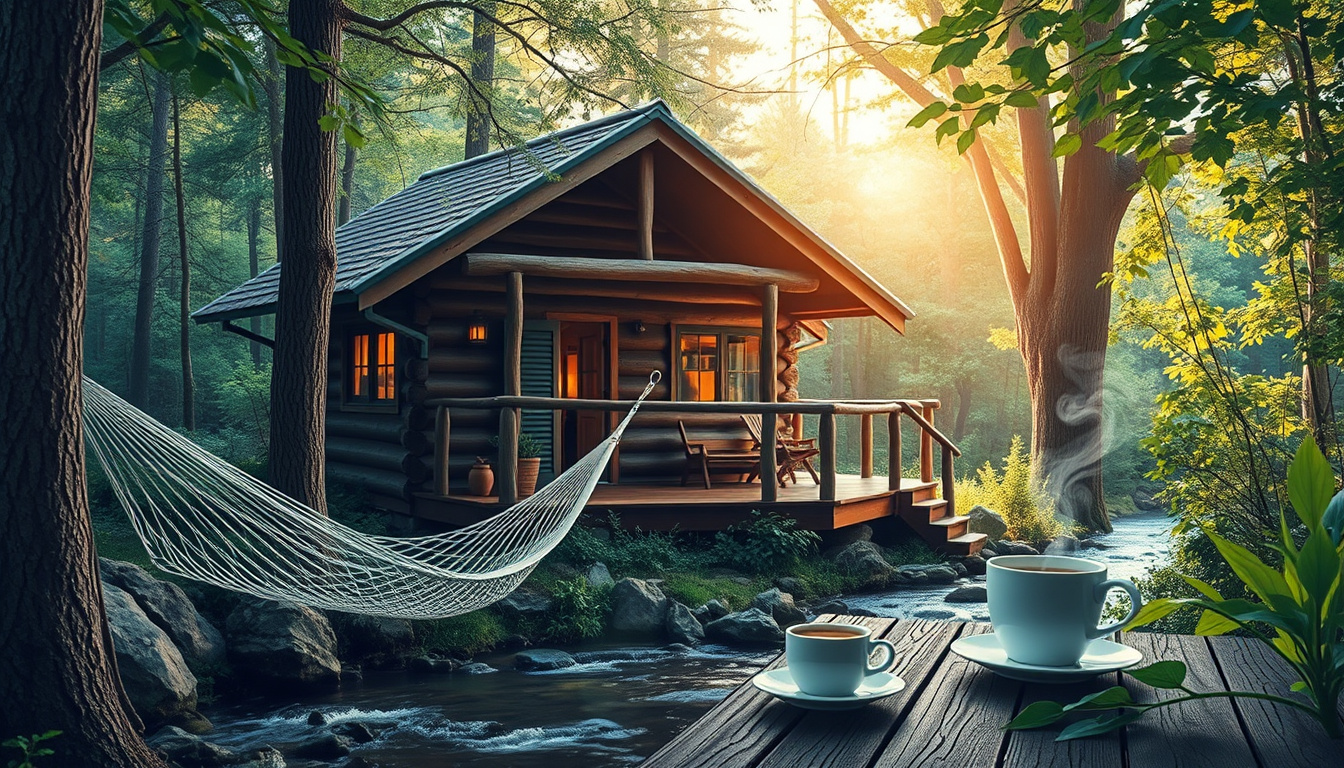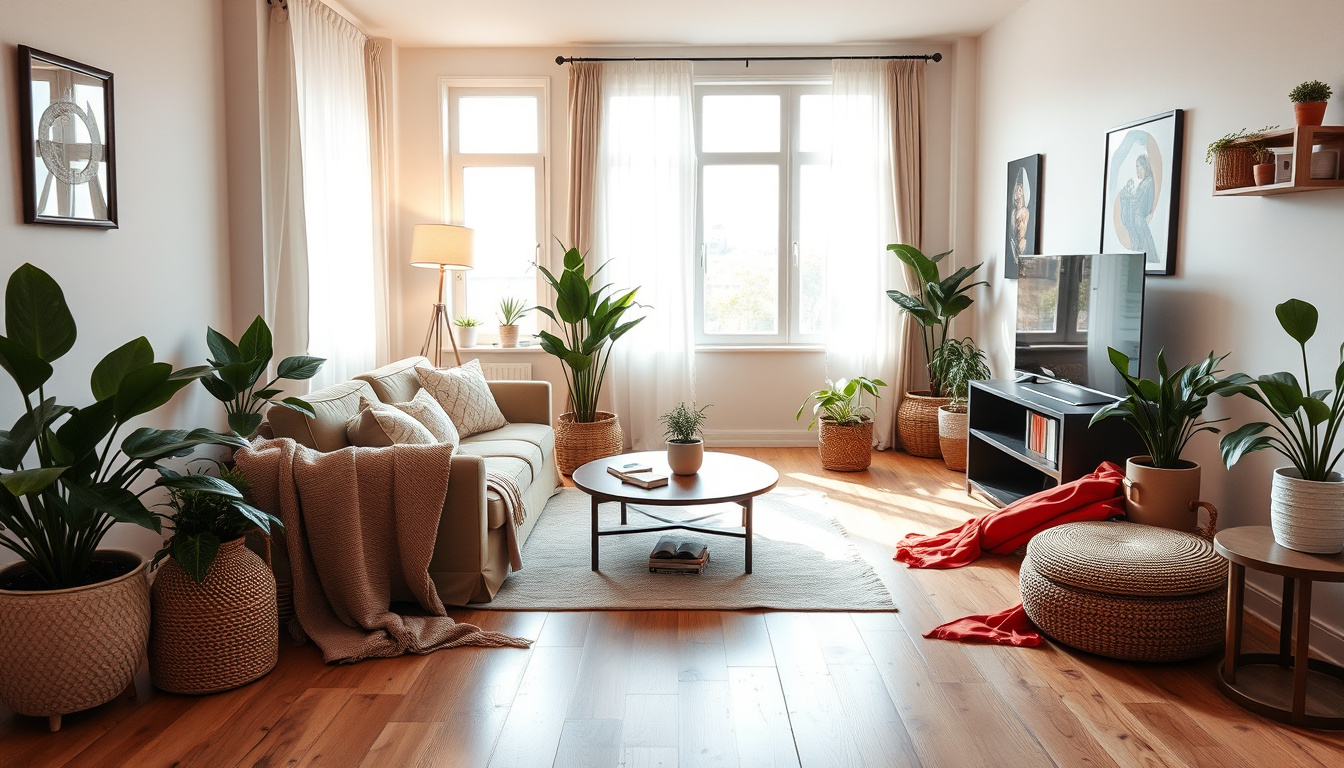The Art of Slow Living in a Fast-Paced World
In today’s fast-paced world, where speed and efficiency are often prioritized, the concept of slow living has emerged as a refreshing countercultural movement. The Art of Slow Living in a Fast-Paced World encourages individuals to embrace a more intentional and mindful way of living, allowing them to reconnect with themselves and the present moment. This article delves into the essence of slow living, exploring its numerous benefits, practical implementation strategies, and how mindfulness plays a crucial role in fostering a slower lifestyle. Additionally, we’ll discuss ways to create a slow living environment in your home that promotes relaxation and well-being. Whether you’re looking to reduce stress or simply crave a more meaningful life, understanding and adopting the art of slow living in a fast-paced world can transform your daily experience and overall happiness.

Key Takeaways
- Slow living is about taking the time to appreciate life’s simple joys amidst the chaos.
- Embracing a slower lifestyle can lead to improved mental health, reduced stress, and deeper connections with others.
- Incorporating slow living can be achieved through mindful practices such as meditation, journaling, and nature walks.
- Mindfulness plays a crucial role in slow living, helping individuals to be present and fully engage with their surroundings.
- Creating a slow living environment at home involves simplifying spaces and curating a soothing atmosphere that promotes relaxation.
Understanding Slow Living: What Does it Mean?
In today’s fast-paced world, where the hustle and bustle of daily life often feels overwhelming, the art of slow living in a fast-paced world has emerged as a vital counter-narrative. Understanding slow living means embracing a lifestyle that prioritizes mindfulness, simplicity, and a deeper connection to the present moment. It encourages individuals to step back from the perpetual rush and distractions that modern technology brings, allowing for a more thoughtful approach to daily activities. At its core, slow living invites us to savor life’s experiences, engage meaningfully with our environment, and foster authentic relationships. By incorporating practices such as intentional decluttering, prioritizing quality over quantity, and nurturing self-care routines, one can cultivate a more serene and fulfilling life. Whether it’s dedicating time to enjoy a meal without distractions or taking nature walks to reconnect with the natural world, the essence of slow living lies in finding joy in the little things and fostering a more intentional and balanced existence.
The Benefits of Embracing a Slower Lifestyle
In today’s fast-paced world, the art of slow living has emerged as a refreshing antidote to the relentless rush of modern life. Embracing a slower lifestyle comes with numerous benefits that not only enhance personal well-being but also foster deeper connections with ourselves and our surroundings. By prioritizing mindfulness and intentionality, individuals can experience reduced stress levels, improved mental clarity, and a greater appreciation for the simple joys of life. Slow living encourages us to savor our meals, appreciate nature, and engage meaningfully in our relationships, rather than rushing through experiences. This shift towards a more deliberate way of living cultivates happiness, enhances creativity, and allows us to lead a more fulfilled life. By consciously choosing to step back from the hustle, we can rediscover the beauty in everyday moments and thrive amidst the chaos.
‘The speed of your life is determined by how you choose to live, so choose wisely and savor each moment.’ – Unknown

Practical Tips for Incorporating Slow Living into Daily Life
In today’s fast-paced world, embracing the art of slow living has become increasingly important for those seeking balance and fulfillment amidst the chaos. Here are some practical tips to help you incorporate slow living into your daily routine. Begin by prioritizing mindfulness practices; try taking five minutes each morning for meditation or deep breathing exercises to set a peaceful tone for the day. Next, establish a digital detox by designating certain hours of the day as screen-free zones, allowing you to fully engage with your surroundings and the people in your life. Additionally, consider cooking meals from scratch using fresh, local ingredients; this not only fosters a creative outlet but also promotes healthier eating habits. Lastly, create a cozy space in your home dedicated to relaxation, whether it be a reading nook or a serene garden corner, where you can retreat and savor the moment. By adopting these habits, you can cultivate the art of slow living in a fast-paced world, leading to a more intentional and rewarding lifestyle.
Mindfulness and Its Role in Slow Living
Mindfulness is pivotal in embracing the art of slow living in a fast-paced world, as it encourages individuals to pause, reflect, and savor each moment. In our modern society, where technology and deadlines often dictate the rhythm of our lives, practicing mindfulness can be a powerful antidote to stress and overwhelm. By being present in the moment—whether it’s enjoying a quiet cup of tea, taking a leisurely stroll, or simply breathing deeply—we cultivate an awareness that allows us to appreciate life’s simple pleasures. This intentional focus not only enhances our well-being but also aligns beautifully with the principles of slow living, reminding us to slow down, reconnect with our surroundings, and prioritize meaningful experiences over mindless multitasking. As we integrate mindfulness into our daily routines, we become more adept at navigating the frenetic pace of life while honoring the slower, more fulfilling journey that life has to offer.

Creating a Slow Living Environment at Home
Creating a slow living environment at home is essential for anyone seeking to embrace the art of slow living in a fast-paced world. To achieve this tranquil lifestyle, begin by decluttering your space; a minimalistic approach not only promotes calm but also allows for mindful organization. Incorporate natural elements such as plants and soft lighting to create a soothing ambiance that encourages relaxation and contemplation. Designate areas in your home for specific activities, such as reading, journaling, or yoga, to naturally slow down your pace. Additionally, consider using soothing colors and textures in your decor to enhance this serene atmosphere. By transforming your home into a sanctuary that promotes slow living, you’ll find that each moment becomes more enjoyable and meaningful, helping you to reconnect with the present.
Frequently Asked Questions
What is slow living and why is it important?
Slow living is a lifestyle choice that emphasizes a more intentional, mindful approach to life, focusing on quality over quantity. It is important because it promotes well-being, reduces stress, and fosters deeper connections with ourselves and others.
What are some benefits of adopting a slower lifestyle?
Adopting a slower lifestyle can lead to numerous benefits, including improved mental clarity, reduced anxiety, enhanced creativity, better relationships, and an overall sense of fulfillment and happiness.
How can I start incorporating slow living into my daily life?
You can start by setting aside specific times for self-reflection, practicing mindfulness, decluttering your space, prioritizing quality time with loved ones, and limiting distractions like technology.
What role does mindfulness play in slow living?
Mindfulness plays a crucial role in slow living as it helps individuals stay present, appreciate the moment, and reduce the chaos that comes with a fast-paced life. Mindfulness practices can enhance your ability to live slowly and intentionally.
How can I create a slow living environment at home?
To create a slow living environment at home, focus on decluttering, using natural materials, incorporating calming colors, adding plants, and creating spaces for relaxation and mindfulness practices.
